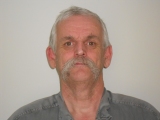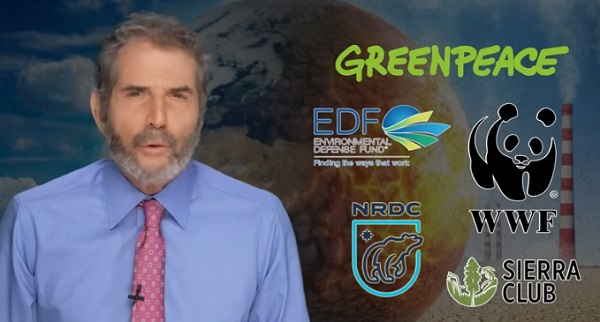Opinion
Our problems like high crime, high unemployment, andpoor air quality are not secrets.

I am always surprised when local residents are amazed after being apprised of the following information. They are not secrets, they are widely known in national news stories, human interest articles and polls, and used in marketing tools by other cities and corporations.
One third of Red Deer’s residents live north of the river and they have the G.H.Dawe Community Centre developed in the 70s and built in the 80s.
Two thirds of Red Deer’s residents live south of the river and they have the Downtown Recreation Centre, Michener Aquatic Centre, Downtown Arena, Centrium, Collicutt Recreation Centre, Pidherney Curling Centre, Kinex Arena, Kinsmen Community Arenas, Red Deer Curling Centre, and the under-construction Gary W. Harris Centre. The city is also talking about replacing the downtown recreation centre with an expanded 50m pool.
One third of Red Deer’s residents live north of the river and there are no high schools current or planned.
Two thirds of Red Deer’s residents live south of the river and there are 4 high schools currently with 2 more high schools planned.
Alberta has the poorest air quality in Canada, and Red Deer region has the poorest air quality in Alberta. Given there are pockets like downtown Edmonton and Calgary that may show poorer readings and there are times like during a forest fire when Fort McMurray will show poorer readings but as a whole and chronically for years that Red Deer region has the poorest air quality.
Red Deer has an unemployment rate that is 10% higher than the provincial rate and 43% higher than the national rate.
Red Deer is the second most dangerous city in Canada after Grande Prairie.
Red Deer population shrank between 2015-2016. The population north of the river shrank by 777 or 2.4% and the population south of the river shrank by 0.25% according to the city’s municipal census. While communities all around Red Deer grew with Blackfalds being one of the fastest growing communities in Canada.
Lethbridge is only marginally smaller than Red Deer but they grew by 2% during the same period. Does anyone believe that they would not use that fact when trying to attract families and businesses to relocate to Lethbridge.
Our crime is up, and recently the province announced a new much larger courthouse will be built in Red Deer, but when it comes to our health care our hospital has been forgotten. Money is going to a health care facility in Sylvan Lake, (a growing community), and if you need to see a specialist or need surgery do not be surprised if you are referred to the Olds hospital, for example.
Red Deer has become complacent, often times smug. Our politicians are content to be big fishes in a small but still shrinking pond. Seldom do you see our elected officials on the provincial, national or international stages. We worry about appeasing the few without expanding the base. A community cannot grow without accommodating the diverse groups beyond the basic group. Without growth a city shrinks as seen by the last 2 municipal censuses.
October 16 2017 is the next municipal election and the next opportunity to hold the mayor, the 8 councillors and the school board trustees accountable. I have heard that some incumbents will not run again but there are subtle hints that they may all run again. So ask the incumbents questions like the following questions.
Why is our unemployment so much higher than the provincial average?
What role did you play in keeping all high schools south of the river?
What have you done to mitigate the poor air quality in Red Deer?
Why are all the recreation centres, indoor ice rinks and indoor swimming pools being built south of the river? Will you commit to building the next indoor swimming pool/recreation centre north of the river?
What role did you play in building the school destined for Johnstone Park, north of the river, to be actually built south of the river?
What root causes have you addressed that increased our crime rates to current levels.
We need to ask because the media outlets do not hire investigating journalists who ask hardball questions they have just reporters/stenographers quoting the politicians. News medias need advertising dollars and the city spends big bucks and carry this big stick effectively.
So we should not be surprised if someone in Vancouver mentions our crime rates or someone in Toronto acknowledges our poor air quality. We should start questioning the decisions and actions taken.
Does having all 6 high schools in one area, 5 along 30 Ave. forcing one third of the students to commute across the whole city twice a day during rush hour traffic, really help our air quality ? Probably not?
Does having all but the one recreational complex on one side of town, increase juvenile delinquency and increase crime rates? Probably, does need asking.
The election is only 6 months away. Questions need to be asked. Complacency and the status quo are not options. Issues are abundant, questions need to be asked and new candidates need to come forward, but most importantly residents should not allow these issues to be ignored or shoved into the back corner.
I will keep asking.
John Stossel
The Green Industrial Complex: Power, Panic, and Profits

From StosselTV
Media portray environmental groups as the underdog. In reality, they’re the big guys, and today they’re rolling in money.
What’s worse is how they use it.
First, they peddle scares. They say polar bears are disappearing. They aren’t. They claim bees are dying off. Also not true. They spread these lies to get MORE money.
“Hysteria generates donations,” explains science writer Jon Entine. “The oxygen for these organizations is money donated by people who think they’re doing good.” It’s why Big E now receives billions in donations.
It’s bad enough that they lie to us to get paid. But they also use their money to block progress. One group boasts, “In the past year our legal team has stopped thousands of miles of fossil fuel pipelines and dozens of large power plants.”
They even oppose solar and wind farms. “It’s a shame,” argues Cato Institute’s Travis Fischer, “When I think about what America could be … we could be so much more prosperous than we are.”
Our video covers more ways Big E blocks progress.
After 40+ years of reporting, I now understand the importance of limited government and personal freedom.
——————————————
Libertarian journalist John Stossel created Stossel TV to explain liberty and free markets to young people.
Prior to Stossel TV he hosted a show on Fox Business and co-anchored ABC’s primetime newsmagazine show, 20/20. Stossel’s economic programs have been adapted into teaching kits by a non-profit organization, “Stossel in the Classroom.”
High school teachers in American public schools now use the videos to help educate their students on economics and economic freedom. They are seen by more than 12 million students every year.
Stossel has received 19 Emmy Awards and has been honored five times for excellence in consumer reporting by the National Press Club.
Other honors include the George Polk Award for Outstanding Local Reporting and the George Foster Peabody Award.
———
To make sure you receive the weekly video from Stossel TV, sign up here: https://johnstossel.activehosted.com/f/1
—— —
Fraser Institute
Democracy waning in Canada due to federal policies

From the Fraser Institute
By Lydia Miljan
In How Democracies Die, Harvard political scientists Steven Levitsky and Daniel Ziblatt argue that while some democracies collapse due to external threats, many more self-destruct from within. Democratic backsliding often occurs not through dramatic coups but through the gradual erosion of institutions by elected leaders—presidents or prime ministers—who subvert the very system that brought them to power. Sometimes this process is swift, as in Germany in 1933, but more often it unfolds slowly and almost imperceptibly.
The book was written during Donald Trump’s first presidential term, when the authors expressed concern about his disregard for democratic norms. Drawing on Juan Linz’s 1978 work The Breakdown of Democratic Regimes, Levitsky and Ziblatt identified several warning signs of democratic decline in Trump’s leadership: rejection of democratic rules, denial of the legitimacy of political opponents, tolerance or encouragement of violence, and a willingness to restrict dissent including criticism from the media.
While Trump is an easy target for such critiques, Levitsky and Ziblatt’s broader thesis is that no democracy is immune to these threats. Could Canada be at risk of democratic decline? In light of developments over the past decade, perhaps.
Consider, for example, the state of free speech and government criticism. The previous Liberal government under Justin Trudeau was notably effective at cultivating a favourable media environment. Following the 2015 election, the media enjoyed a prolonged honeymoon period, often focusing on the prime minister’s image and “sunny ways.” After the 2019 election, which resulted in a minority government, the strategy shifted toward direct financial support. Citing pandemic-related revenue losses, the government introduced “temporary” subsidies for media organizations. These programs have since become permanent and costly, with $325 million allocated for 2024/25. During the 2025 election campaign, Mark Carney pledged to increase this by an additional $150 million.
Beyond the sheer scale of these subsidies, there’s growing concern that legacy media outlets—now financially dependent on government support—may struggle to maintain objectivity, particularly during national elections. This dependency risks undermining the media’s role as a watchdog of democracy.
Second, on April 27, 2023, the Trudeau government passed Bill C-11, an update to the Broadcasting Act that extends CRTC regulation to digital content. While individual social media users and podcasters are technically exempt, the law allows the CRTC to regulate platforms that host content from traditional broadcasters and streaming services—raising concerns about indirect censorship. This move further restricted freedom of speech in Canada.
Third, the government’s invocation of the Emergencies Act to end the Freedom Convoy protest in Ottawa was ruled unconstitutional by Federal Court Justice Richard Mosley who found that the government had not met the legal threshold for such extraordinary powers. The same day of the ruling the government announced it would appeal the 200-page decision, doubling down on its justification for invoking the Act.
In addition to these concerns, federal government program spending has grown significantly—from 12.8 per cent of GDP in 2014/15 to a projected 16.2 per cent in 2023/24—indicating that the government is consuming an increasing share of the country’s resources.
Finally, Bill C-5, the One Canadian Economy Act, which became law on June 26, grants the federal cabinet—and effectively the prime minister—the power to override existing laws and regulations for projects deemed in the “national interest.” The bill’s vague language leaves the definition of “national interest” open to broad interpretation, giving the executive branch unprecedented authority to micromanage major projects.
Individually, these developments may appear justifiable or benign. Taken together, they suggest a troubling pattern—a gradual erosion of democratic norms and institutions in Canada.
-

 Addictions1 day ago
Addictions1 day agoWhy B.C.’s new witnessed dosing guidelines are built to fail
-

 Business1 day ago
Business1 day agoCarney Liberals quietly award Pfizer, Moderna nearly $400 million for new COVID shot contracts
-

 Frontier Centre for Public Policy2 days ago
Frontier Centre for Public Policy2 days agoCanada’s New Border Bill Spies On You, Not The Bad Guys
-

 Business1 day ago
Business1 day agoMark Carney’s Fiscal Fantasy Will Bankrupt Canada
-

 Opinion1 day ago
Opinion1 day agoCharity Campaigns vs. Charity Donations
-

 Energy2 days ago
Energy2 days agoCNN’s Shock Climate Polling Data Reinforces Trump’s Energy Agenda
-

 Red Deer1 day ago
Red Deer1 day agoWesterner Days Attraction pass and New Experiences!
-

 COVID-191 day ago
COVID-191 day agoTrump DOJ dismisses charges against doctor who issued fake COVID passports






